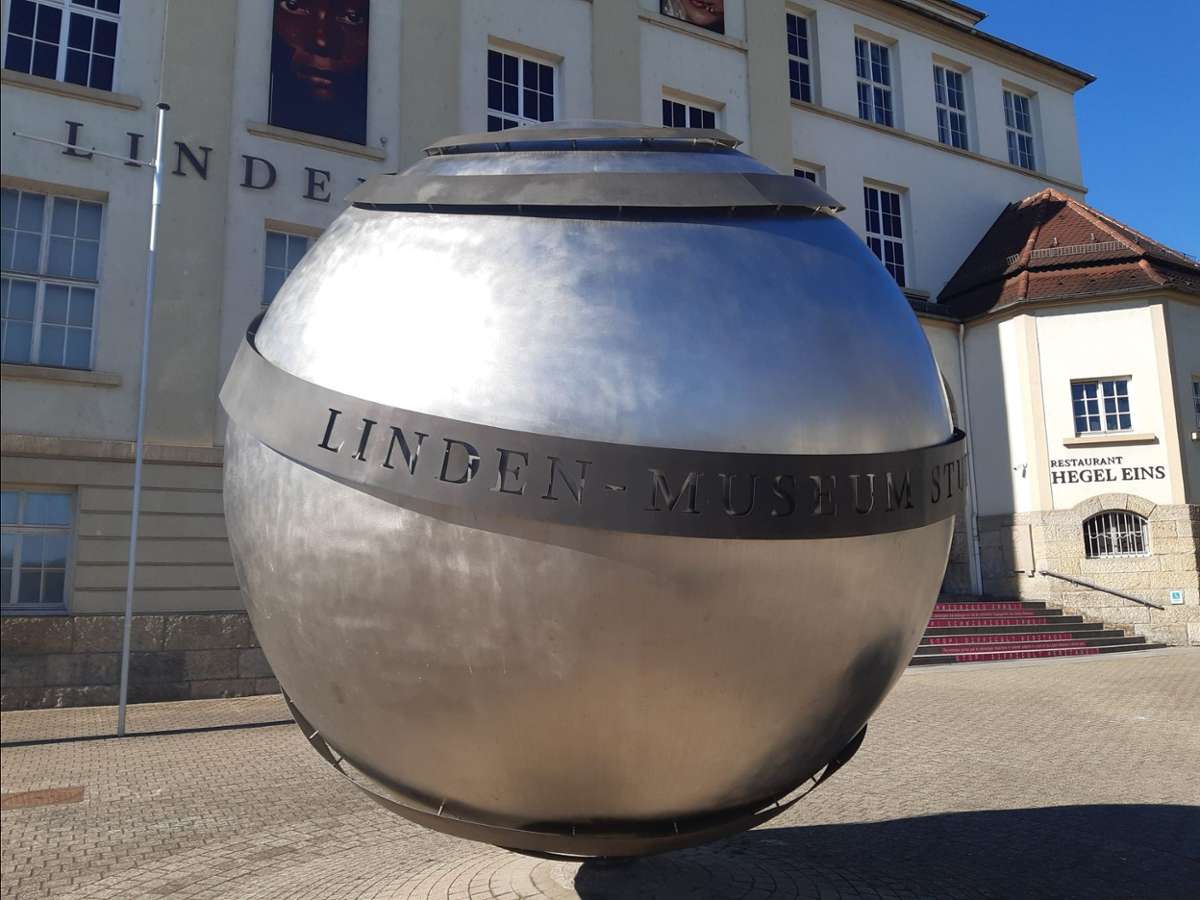Written by Sebastian Milbets
The whole world in one house? Globe in front of the Lyndon Museum Photo: Sebastian Milbets
The Stuttgart Lyndon Museum initially paid homage to our writer for its diverse cultures – not just for critically examining its history.
Written by Sebastian Milbets
March 14, 2021 – 1:00 p.m.
Stuttgart – I can’t wait for the museums to reopen. During the lockout, without any new cultural input, I already had signs of withdrawal. Seeing things “in real life” rather than in a book or documentary makes a difference.
The first thing I would do is go to the Lyndon Museum. As a child I was fascinated by artifacts from distant lands. Then, when I was eleven, my mom and I came here every week after school. The supervising staff already knew me, and a woman once said that it was unusual for a child of that age to be interested in a museum. As a little boy, I was very impressed with the bizarre masks of the South Seas, which started behind the entrance area, not today.
Exotic tremor
This cozy horror, which is my favorite in view of the bizarre masks, is certainly not without problems. In short, the shock inspired by “foreign”, “wild”, “other” is, as part of the colonial view, an open insult to the “uncivilized”. For some years now, ethnographic museums around the world have been manipulating their past as part of post-colonial research. Most ethnic exhibitions were created at the height of imperialism and colonialism. In museums, “exhibits” often embedded in stolen objects are on display – certainly not at eye level with non-European cultures.
Intricate artifacts
The Linden Museum sees its history as a critique. The idea for the Stuttgart Museum was finally born in 1882, two years before the awkward Congolese conference in Berlin, when European nations “divided” Africa into colonial zones. The workshop exhibition, entitled “Hard Legacy”, explores the appearance of the house originally designed to prepare immigrants to the German foreign colonies. The exhibition is surrounded by optical dilemmas representing events and complex artifacts. The steps in front of the entrance have stickers that mark the ornaments on the entrance board, which are supposed to represent a person from Africa and a person from New Guinea in the same way.
A confident and contemporary Africa
But the good thing about the Linden Museum is that it always undermines the colonial view. When you look at the old permanent exhibition in Africa, the first thing you see is a replica of the modern kiosk. Advertisements for African companies hung on the walls, followed by well-known products from Europe. The installation showed a promising contemporary Africa. I learned here as a child that Africa is not made up of identical forms of poverty and charisma, otherwise it often floats. Unfortunately, this installation has disappeared as part of the restoration of the Africa collection in 2019, although the new exhibition is apparently handled with a colonial perspective. As a child, the appearance of the kiosk taught me a great deal of respect and understanding for the unity and diversity of another culture.

“Communicator. Problem solver. Gamer. Passionate writer. Analyst. Avid creator. Lifelong travel maven. Tv evangelist.”





More Stories
Choosing Between Russian and Greek Tortoises: Which is Right for You?
Choosing the Best Tools for Flawless Nail Art
Get Real Results: Buy Instagram Likes and Followers from InsFollowPro.com